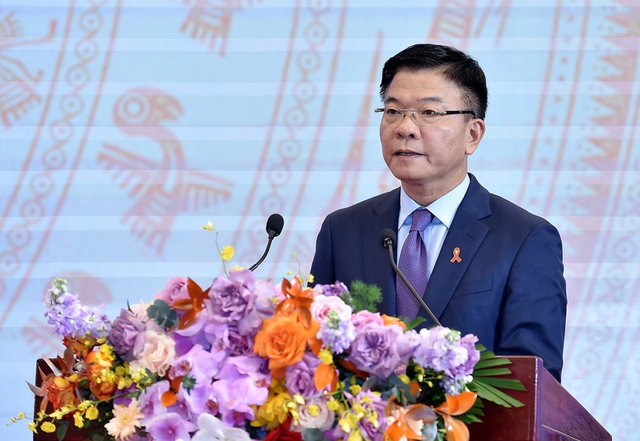Gov't pledges to continue prioritizing resources to end AIDS by 2030
VGP – The Government of Viet Nam pledges to continue prioritizing resources for HIV/AIDS prevention in a bid to end AIDS by 2030, said Deputy Prime Minister Le Thanh Long.

Deputy Prime Minister Le Thanh Long, who is Chairman of the National Committee for HIV/AIDS, Drug, and Prostitution Prevention addresses the meeting marking the World AIDS Day in Ha Noi, November 29, 2024. Photo: VGP/Duc Tuan
Le, who is also Chairman of the National Committee for HIV/AIDS, Drug, and Prostitution Prevention, made the above statement at a meeting held by the Ministry of Health in Ha Noi on Friday to mark the World AIDS Day (December 1).
The Government will continue adopting and implementing policies on HIV/AIDS prevention and control, said the Deputy Prime Minister.
He took the occasion to call for more active engagement of the whole political system, social organizations, businesses and citizens as well as continued coordination and assistance from the international community to help Viet Nam achieve HIV/AIDS prevention goals.
In 2023, Viet Nam was the leading country in the Asia-Pacific region in terms of the number of people receiving pre-exposure prophylaxis (PrEP) – a medicine recomomended for those with frequent high-risk behaviors for HIV infection, said Minister Dao Hong Lan, adding that around 70,000 people take PrEP in 2024.
The Southeast Asian country has effectively deploy HIV counselling and testing program, provding testing service to more than 2 million turns of people and helping detect around 11,000 new HIV cases annually.

Participants to the meeting in response to the World AIDS Day
Viet Nam is also a leading country in the world in terms of HIV treatment quality, with more than 97 percent of people infected with HIV treated with antiretroviral drugs, Dao said.
Currently, nearly 183,000 HIV/AIDS patients nationwide receive the antiretroviral treatment (ARV) therapy, she added.
In recent years, Viet Nam has made concerted efforts to mobilize domestic financial resources to sustain its HIV/AIDS prevention and treatment program, with a particular focus on financing HIV/AIDS treatment services through the Health Insurance Fund.
Given the success, U.S. Ambassador to Viet Nam Marc. E. Knapper commended the Vietnamese Government and the Ministry of Health for the achievements in controlling HIV with its own resourses.
A New UNAIDS report shows AIDS pandemic can be ended by 2030, but only if leaders boost resources and protect human rights now.
The report finds that if leaders take the bold actions needed now to ensure sufficient and sustainable resourcing and protect everyone's human rights, the number of people living with HIV, requiring life-long treatment, will settle at around 29 million by 2050 but if they take the wrong path, the number of people who will need life-long support will rise to 46 million compared to 39.9 million in 2023.
Although tremendous progress has been made in preventing new HIV infections which have fallen by 39% since 2010 globally, and by 59% in eastern and southern Africa, the report shows that new HIV infections are rising in three regions, the Middle East and North Africa, Eastern Europe and central Asia and Latin America, and gaps and inequalities persist./.

